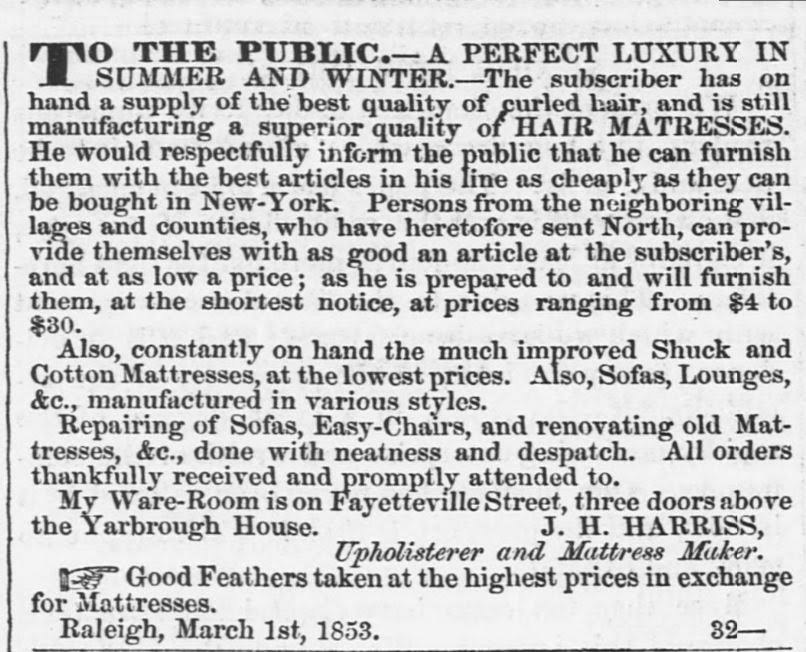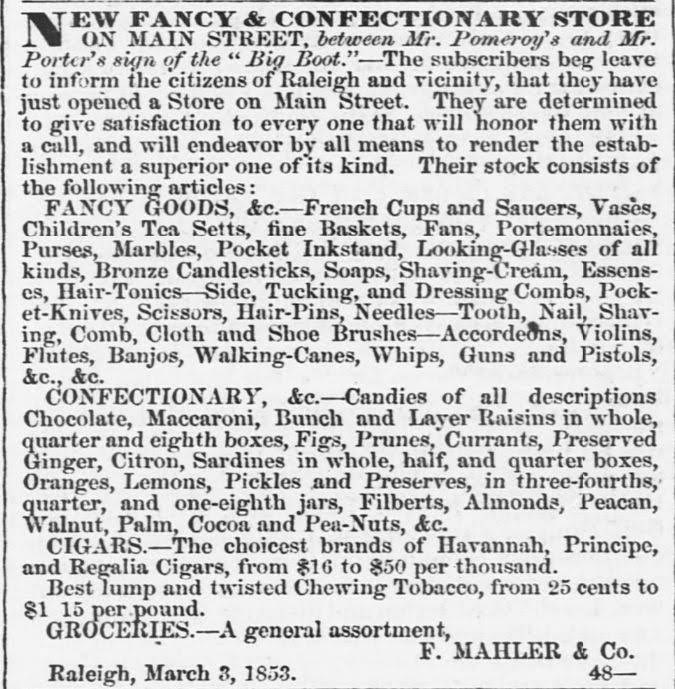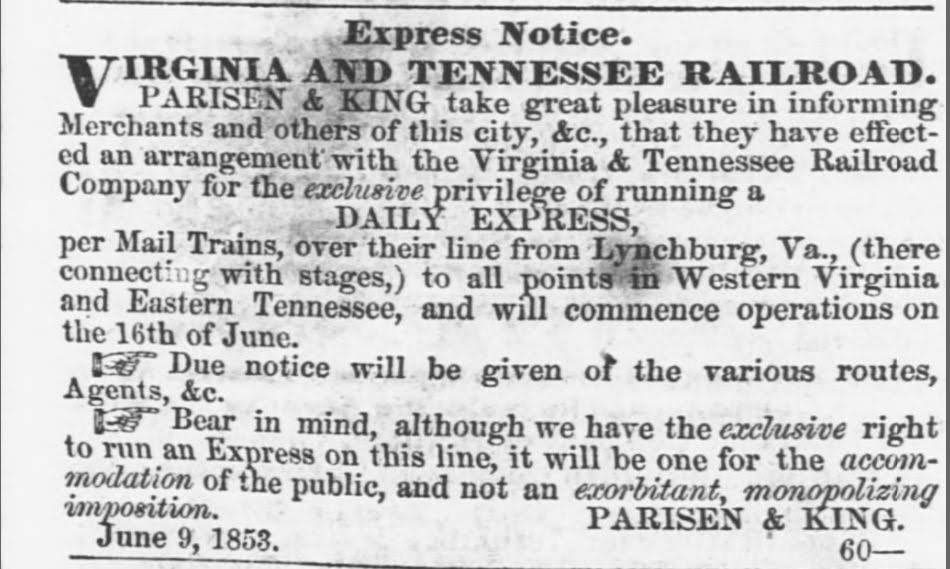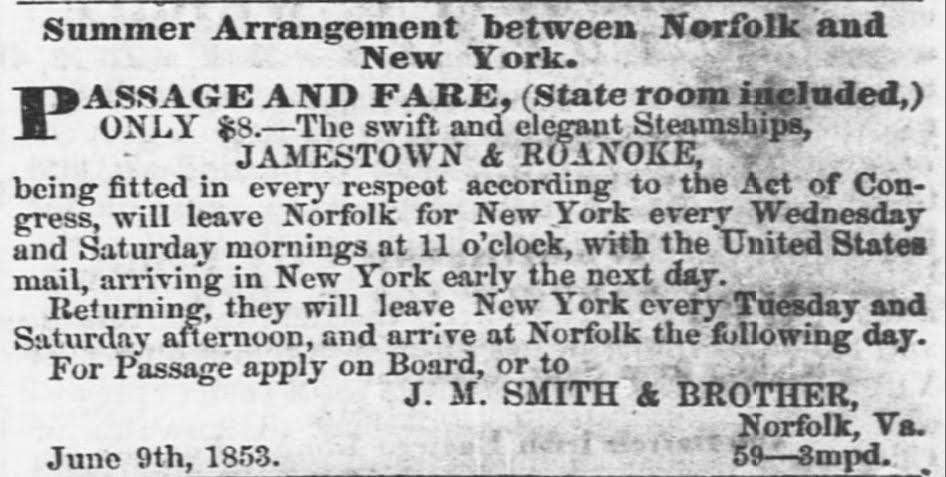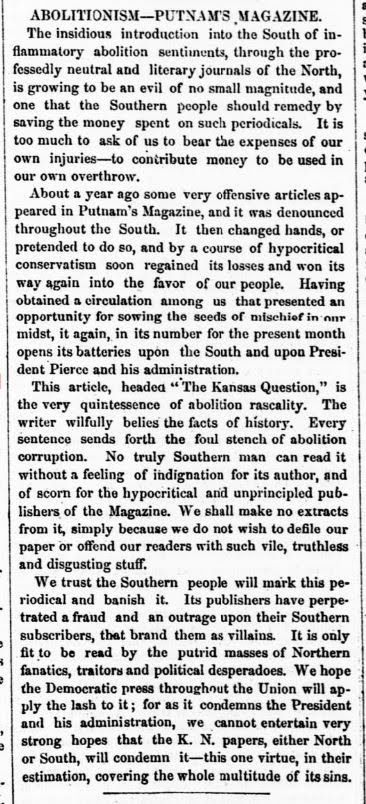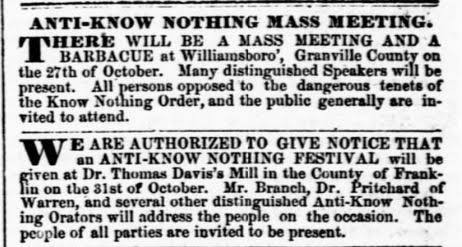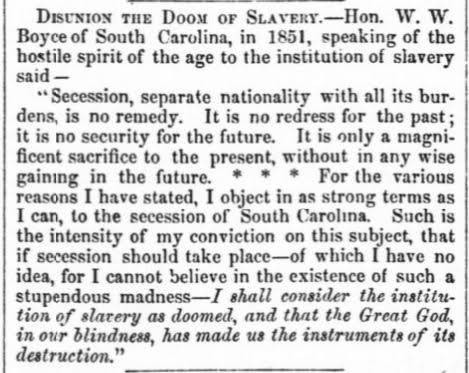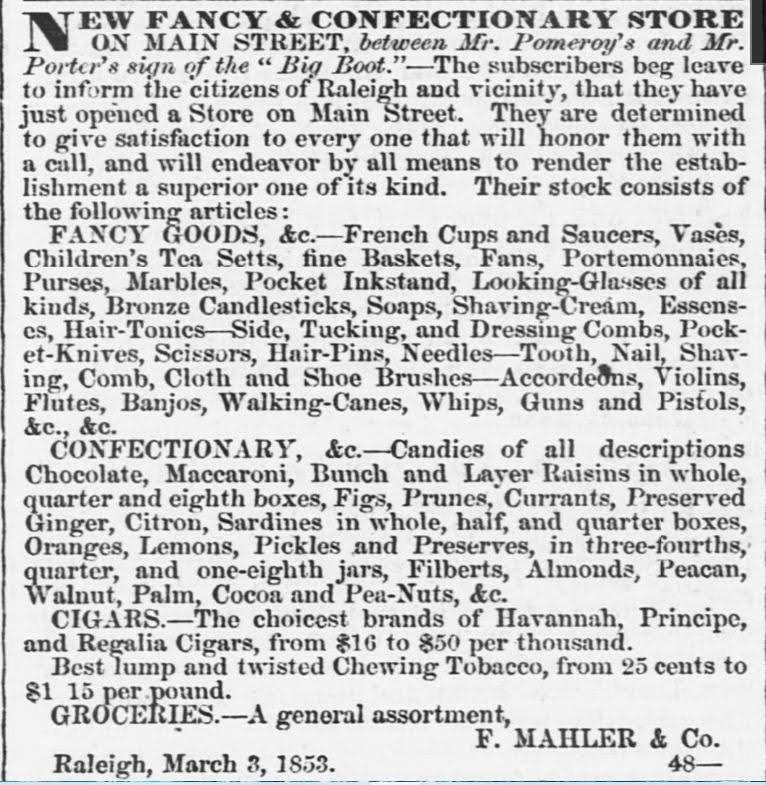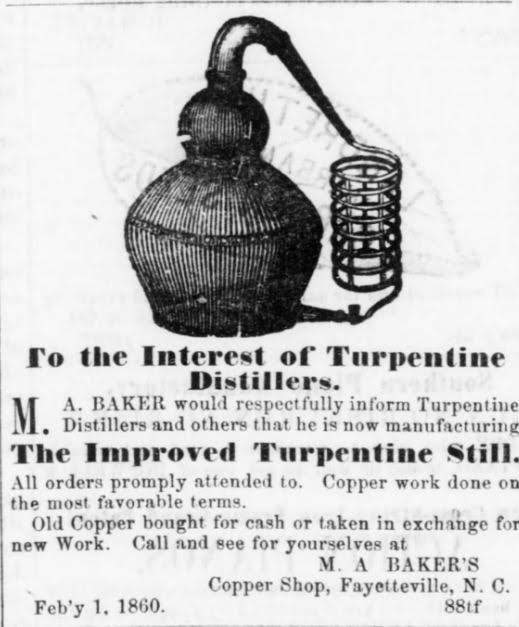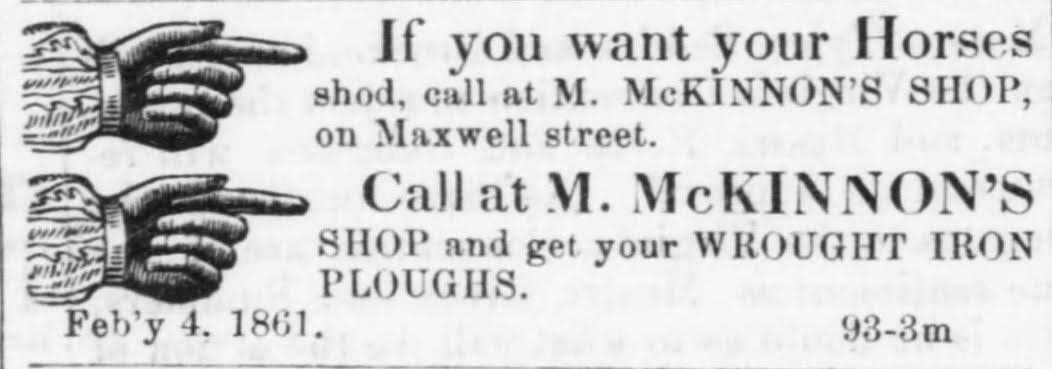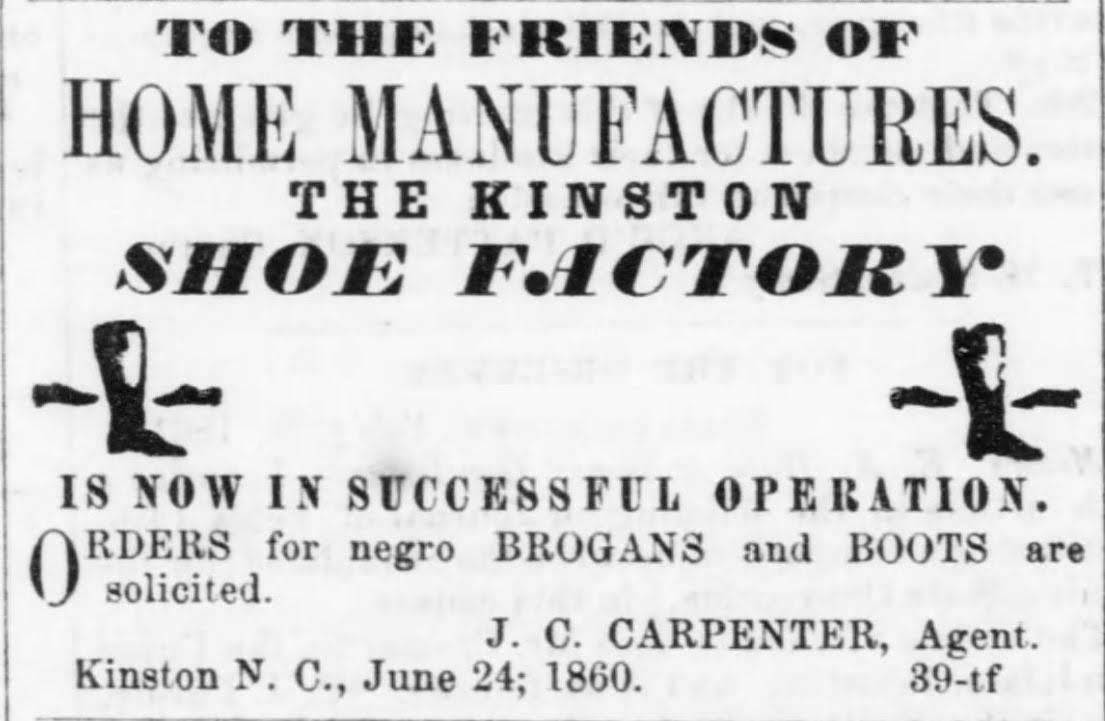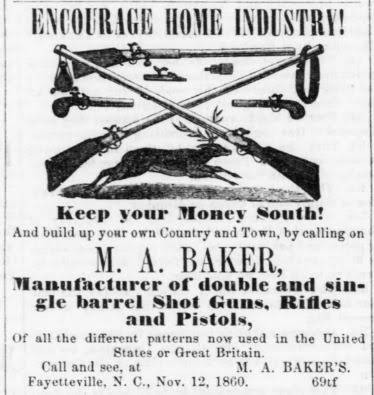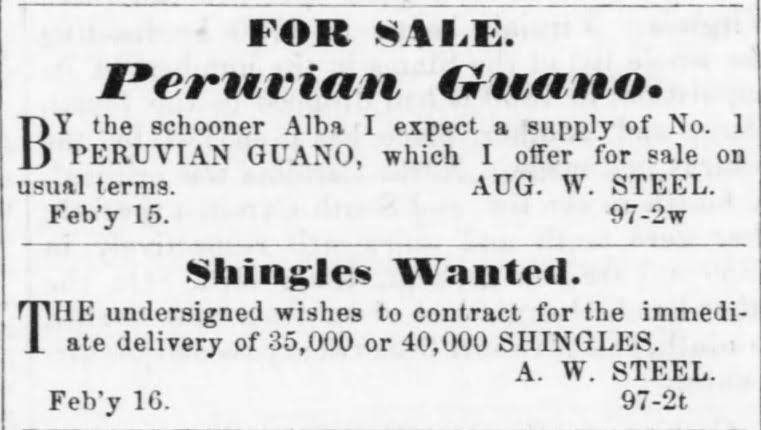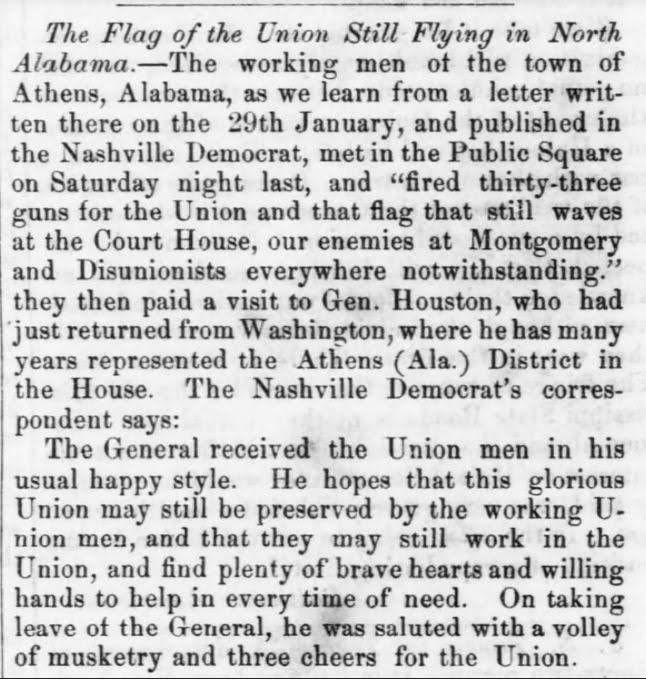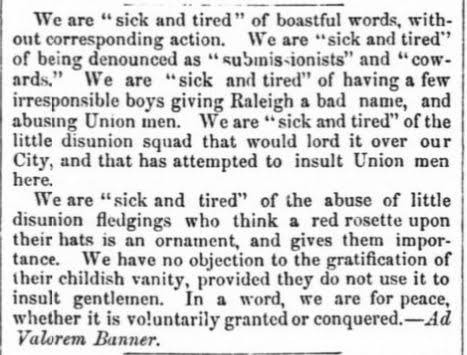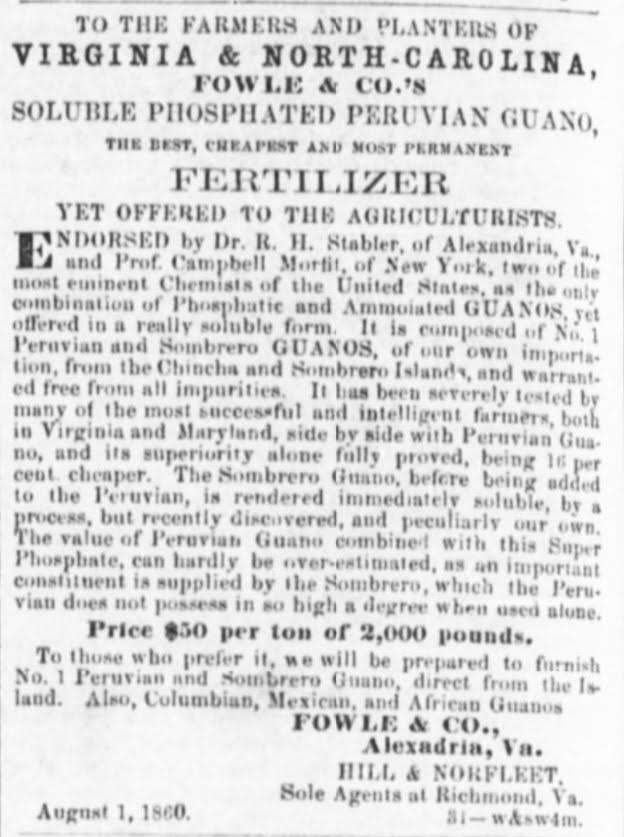A glimpse into newspapers from before the Civil War shows how much things have changed—and stayed the same.
by Joel Haas | images courtesy Library of Congress

The Library of Congress has a wonderful time machine: old newspapers. I recently spent some time perusing the local papers from 1855 to 1861, before the Civil War. I found some surprising parallels.
Inside The Raleigh Standard: the number of daily deaths due to yellow fever; a flag-flying controversy; a pro-immigration editorial; an account of the NC State Fair; and a sure cure for baldness. There are ads for trips to New York; mattress sales; guns; insurance; bell hanging; big-box warehouse stores; turpentine stills and fertilizer. “All at lowest prices, best quality and good terms.” All that sounds familiar, even the yellow fever death reports.
A look behind the headlines, though, brings the reader into a world that’s almost incomprehensibly different. The flag flying controversy is for NOT flying the Confederate flag. For example, the Standard reports approvingly that in recently seceded Alabama, a group of working men refuse to fly any other than the United States flag.
Insurance ads offer life insurance up to $5,000 for “healthy white men,” and these healthy, wealthy white men could insure their slaves’ lives for up to “two thirds their fair market value.”
Accounts of the NC State Fair—“which increases in attendance every year”—include complete listings of who won which awards and their hometowns. Typos plagued the paper—there is a “Diary Cow” award. One supposes this cow gives milk reminding you of the day’s events.
Click to open and expand slideshow.
Immigration is an issue.
The Raleigh Standard’s pro-immigration editorial damns the Know Nothing party and praises the Democrats, who were the pro-slavery and anti-secessionist party at the time. The Know Nothings were the alt-Right of their time, founded as a secret society to stop the flood of Catholics and other non-white non-Christian immigrants. When asked about the society, the members replied they “Know Nothing,” hence the name. In a move roundly condemned by the Standard, the Know Nothings changed their name to “The American Party” and immediately began branding their opponents “anti-American.”
“Taken overall, the stories and advertisements reveal both an underlying sense of Southern inferiority and pride.”
Repeatedly, the ads boast of stores offering “the latest Northern fashions,” “Northern goods of highest quality and offered at prices as low as those in the North.” In contrast, there is a “buy local” movement: a gun maker and several carriage makers’ ads urge people to “buy Southern goods.”
One indisputably Southern good for Southern markets was for slave owners. An ad announcing the opening of a business making “brogans and boots for Negroes” was pitched to the slave owners. As one would expect, are ads seeking the return of runaway slaves. Surprisingly, there is at least one ad promising a reward for a runaway white slave. The reward is much less than for the return of any black slave.
A Raleigh firm advertises the finest goose down mattresses, though “corn shuck mattresses also available” and “the highest prices paid to those bringing in good quality goose feathers.” Other ads tell people of a new business selling ice; a store bragging that they sell the finest pastries and cigars; there are regular offers of “Peruvian guano” by the ton—it’s said to be the best fertilizer.
Modern transport is beginning.
The longest railroad in the world in the early 1850s ran from Wilmington, NC to Weldon, NC, near the Virginia border. By late 1859, one could “ride the Gaston & Raleigh Railroad to Weldon NC, departing in the morning and arriving in Weldon with plenty of time to have lunch and catch a train to Richmond or Norfolk. Most people going north of Richmond found it cheaper, easier and faster to go to Norfolk by taking the daily steamboat to NYC. For $8 one could enjoy the overnight trip in their own stateroom.
The 1860 census recorded Raleigh having 4,780 inhabitants: 1,284 white males; 1,409 white females; 186 free black men; 280 free black women, 1,621 slaves. Only white males had the right to vote, so of the entire city population, only 37% could vote. At the time, Raleigh was twice as big as Charlotte.
A news article about taxes claims that North Carolina taxes were lower by far than 14 other states. The state took in a bit over $91,000 and the legislature argued for continued low taxes instead of expenditure on services since lower taxes “will attract more businesses to move here.”
A 16-year-old Raleigh resident wrote to the editor that he could not see what slave-holding states would gain with secession: “After all, Dred Scott means Southerners can take their slaves anywhere in the United States and not worry that would free them. Plus, the Fugitive Slave Act compels all free states to return slaves to their owners in the South. What more could be gained than this much freedom?”
Conservatives then were people who did not favor the “disunionists.” In Raleigh there were large meetings in which crowds pledged their loyalty to the United States until mid-April 1861.
Public opinion turned 180 degrees on April 15, 1861. President Lincoln called for 75,000 volunteers to suppress the areas then “in rebellion.” That was too much for even the most unionist citizens. They wanted to stay in the union. But not to make war on other states, nor allow war to be made on themselves.
Many questioned the constitutionality of Lincoln’s call. Southern newspapers reported how many thousands of men were immediately pledged by free state governors. North Carolinians were persuaded to defend themselves, not to fight to secede.
Today, some argue the war was not about slavery but states’ rights. In reading the newspapers, it appears that it was about slavery, but at that time the average man who had no slaves viewed it as about states’ rights.
Thus, the rich men persuaded the poor men to fight.

